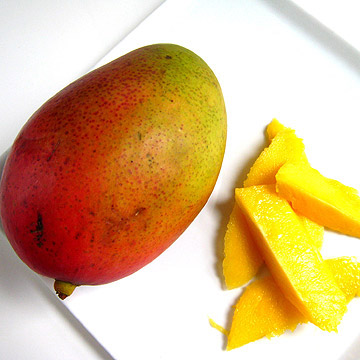
Step 1: Select & Buy a Mango
This luscious tropical fruit is a yummy treat for babies who are at least 9 months old. When purchasing fresh mango, look for fruit that's free of nicks, bruises, and other blemishes. A ripe mango will give slightly when you squeeze it and have a fruity aroma at the steam; the color can vary between red, yellow, or orange and isn't the best indicator of ripeness. One mango yields about six ounces of puree.
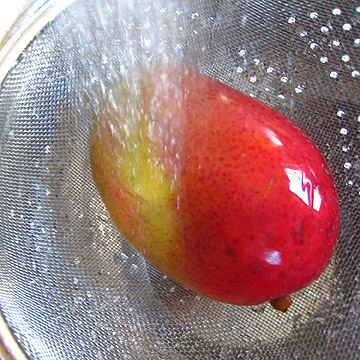
Step 2: Wash the Mango
Wash the mango with a mixture of three parts water and one part white vinegar to remove bacteria. Rinse under cool running water and dry.
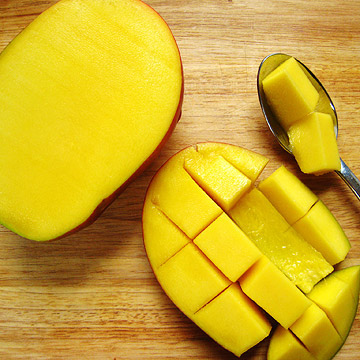
Step 3: Peel & Slice the Mango
Use a knife with serrated edges to slice the thickest part of the mango on either side; cut as close as possible to the pit. Make three horizontal and three vertical cuts (down to the peel but not through it) in the flesh of the mango. Scoop the flesh out with a spoon.
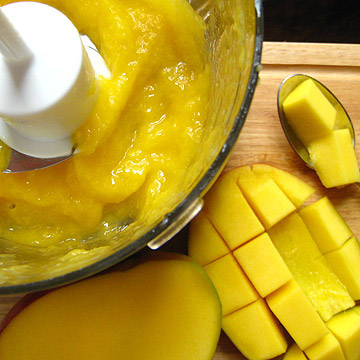
Step 4: Puree or Mash the Mango
Puree mango in a food processor or blender until smooth. Add water as needed to reach desired consistency.
For chunkier mango puree, which is ideal for babies 10 months or older, mash the mango with a potato masher instead of pureeing it.
Step 5: Serve Mango Puree
This tropical fruit tastes great plain. To introduce your baby to new textures and flavors, mix the puree with other fruits, veggies, poultry, oatmeal, or full-fat yogurt. Try mixing mango puree with:
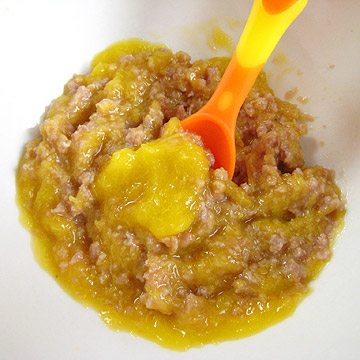
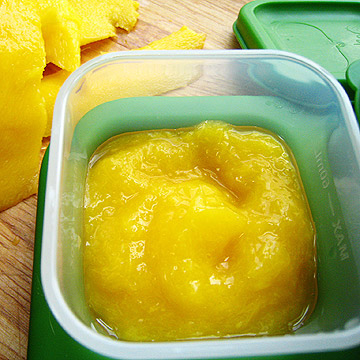
Step 6: Freeze Leftover Mango Puree
Refrigerate leftover mango puree in BPA-free containers for up to 3 days. Freeze leftovers for up to 3 months. Thaw overnight in your refrigerator.
Note: Always check with your pediatrician before introducing your baby to a new food, particularly if your baby has food allergies. Additionally, some pediatricians do not recommend making your own carrot, beet, or spinach puree because these fresh veggies can be higher in nitrates.
Copyright & copy 2011 Meredith Corporation.
Parents Magazine

